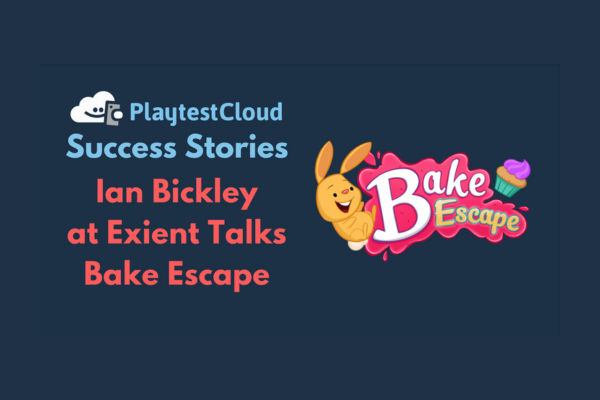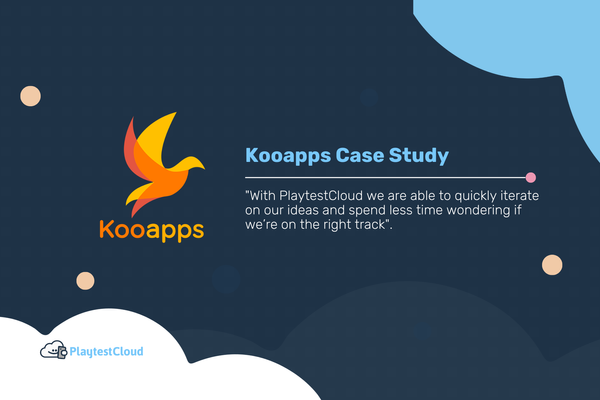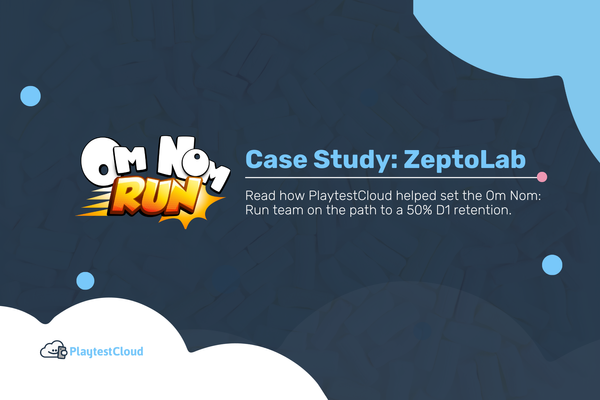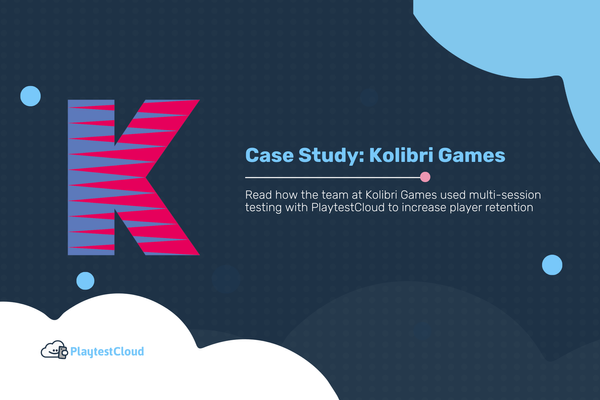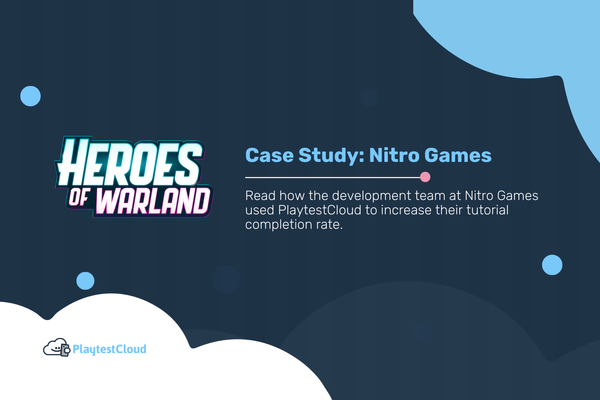What are PlaytestCloud Success Stories?
PlaytestCloud is the playtesting solution for many large, medium and indie game developers. Since launching in 2012, we've been developing tools which help game developers realize their game design vision through user testing with real players.
We are now a cog in many game developers development cycles, and we've been used as part of the development process for many successful mobile games over the last few years.
We started reaching out to some developers to hear their side of the story and to share their thoughts and experiences using PlaytestCloud as part of their development cycle.
In this maiden PlaytestCloud Success Stories post, we were fortunate enough to speak with Ian Bickley, the User Experience Director at Exient, an award-winning independent game studio based in the UK, who develop for multiple platforms using their proprietary XGS game engine.
We talk about Bake Escape, the role playtesting had in shaping the success of that game and others, and why PlaytestCloud has become an integral part of Exient's game development process.
"I think that's the great thing about PlaytestCloud, you can try different things out. Being able to submit several different builds all at once, watch the videos, see which one works best, get some feedback on one video, get some feedback on another video, and that will then help inform the next iteration you're going to build on."
In Case You Missed It: My Games Are Great, but Players Still Struggle?
Interview with Ian Bickley at Exient
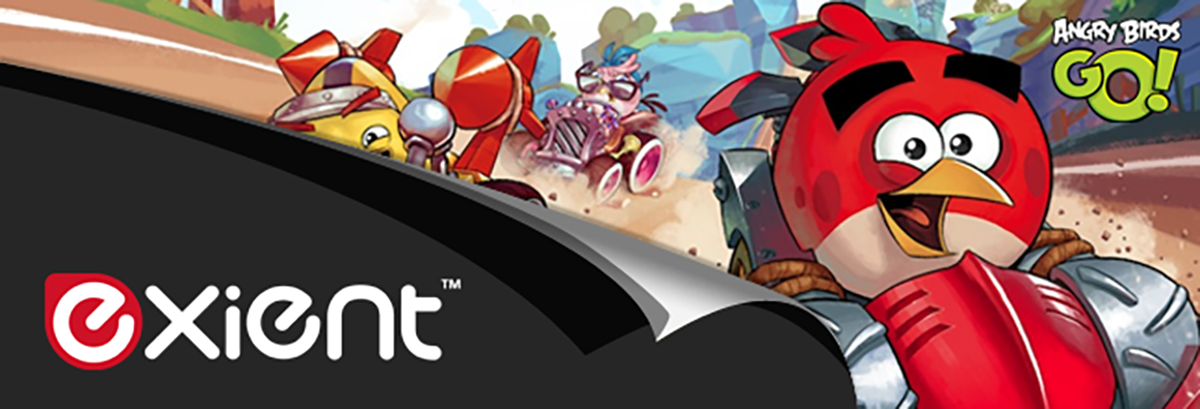
Dillon Cleaver (DC): Can you tell me a bit about yourself and your background?
Ian Bickley (IB): I'm the user experience director at Exient. I've been at the company for just over three years. I was at the UK studio for two, and I've been in Malta for nearly a year. I've worked on several products at Exient, including Angry Birds Go, Angry Birds Transformers, Dancing with the Stars, and of course, Bake Escape – which is our baby.
Before that, I worked at Codemasters, making racing games. I’ve also worked on a kids MMO and even done some iGaming stuff. I've been doing UX work for about 13 or so years now I guess, probably before I realized it was called UX.
"Early in my career, I worked on something for about six months or so, and I was quite confident in it, I thought, 'Yeah, it's going to be great.' I went into a playtesting session, and nobody got it. It was like being punched in the stomach. It was a valuable lesson to learn."
DC: Were you the lead designer for Bake Escape?
IB: No, I wasn't. I was the only UX guy at the company back then, and I just helped on the project as and when needed. I was mostly working on Angry Birds Transformers – my main project at the time.
For Bake Escape I helped out with wireframes, screen flows, reward sequences and first-time user experience design. I help the team create those things for most of our projects.
DC: When did development begin for Bake Escape?
IB: That's a good question. I joined the company in January 2014, at which point we had a very rough prototype built in Flash. It was completely white-boxed, using very rudimentary art. We had the basic mechanic down. It was simple, and that was as much had been done when I joined.
Looking back, seeing how we came around and settled on the baking theme; how we created the characters, developed the art style, then to go from there and seeing the game go through soft-launch and into full release was a really rewarding experience and quite a journey.
We spent a lot of time on figuring out what would resonate with players, what would stick, and what would work emotionally in key areas of the game. So, yeah, it was a lot of work looking back on it, from where we started to where we ended up.
DC: And how long was the game in development?
IB: About eighteen months. It was a loose idea to start with but once we'd got the core mechanic down – we felt that sliding rows of tiles was fresh and innovative. Then we started to think about the theme.
"Yeah, it was kinda why I wanted to put the game into PlaytestCloud. That input is very different on a very micro-level for somebody who plays Candy Crush. To move a whole row is actually really jarring, and when I was watching people play it, you could see that they were so used to going one tile at a time."
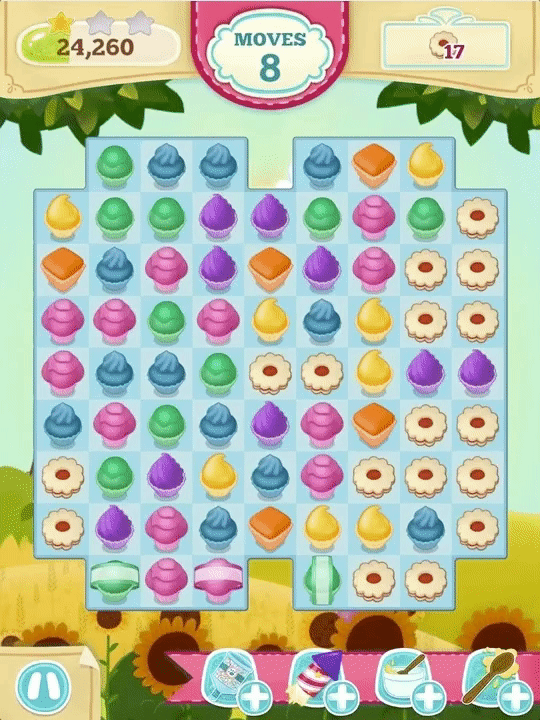
DC: Can you talk about the game's early development and the decision to go with a baking theme?
IB: We did surveys and focus groups to test different art styles and themes. We had robots in there, a circus and a baking theme, possibly pirates too. We also asked questions about different characters. The bear, the rabbit, and the girl [characters in Bake Escape] were popular, so we decided to focus more on those guys.
Quite early on we believed it should feel like you were going on some sort of journey with the characters. We use the "hero's journey" quite a lot within our development process. That’s why a traveling circus came about, and because we felt animals would appeal to our target audience.
But to be honest, I think things just started to fall into place around cakes because The Great British Bake Off TV show was really popular at the time. The guys on the team were all massive fans... which... [laughs] resulted with a lot of treats coming into the office. People would bring in these amazing home-made cakes, which was great for the team morale, but not so great for my waistline.
Once we’d settled on baking, we thought, “Cakes would fit well with the tiles" and it went on from there.
DC: Yeah, I'd be surprised if you'd just sat down and said, "We like baking."
IB: We did our homework. The combination of focus testing and surveys gave us the confidence to pick parts from the baking theme and the circus theme. Once we'd got that down, we spent time fleshing out the characters.
We did a brainstorming session where we printed out the characters and had the team write what other characters from different media related to them… So, for example, with the bear, we were like, "He's a little bit like Homer Simpson, but he's not as dumb. Maybe he’s more like Sully from Monsters Inc?” So we put someone in there who was a bit more jovial. With the rabbit, he was cheeky and hyperactive, a bit like Pikachu, but not quite as angry, so more bouncy like Tigger from Winnie the Pooh. The girl was the voice of sanity and a mentor to the bear and the rabbit. Someone suggested she was a bit like Amelie, which triggered the slightly Parisian tone. We then worked on what the different character roles would be in the story, their best/worst qualities, motivations, and goals.
The relationship between the three characters was really important. We wanted the bear to feel like he was a bit of a friendly father figure - warm and cuddly. We decided to put him on the level fail sequence, where he's crying, and looking sad. We felt that would really resonate with players. Then for the level completed sequence – we’d get the bunny doing an over excited "Yay!" celebration because he was the happy, excitable one.
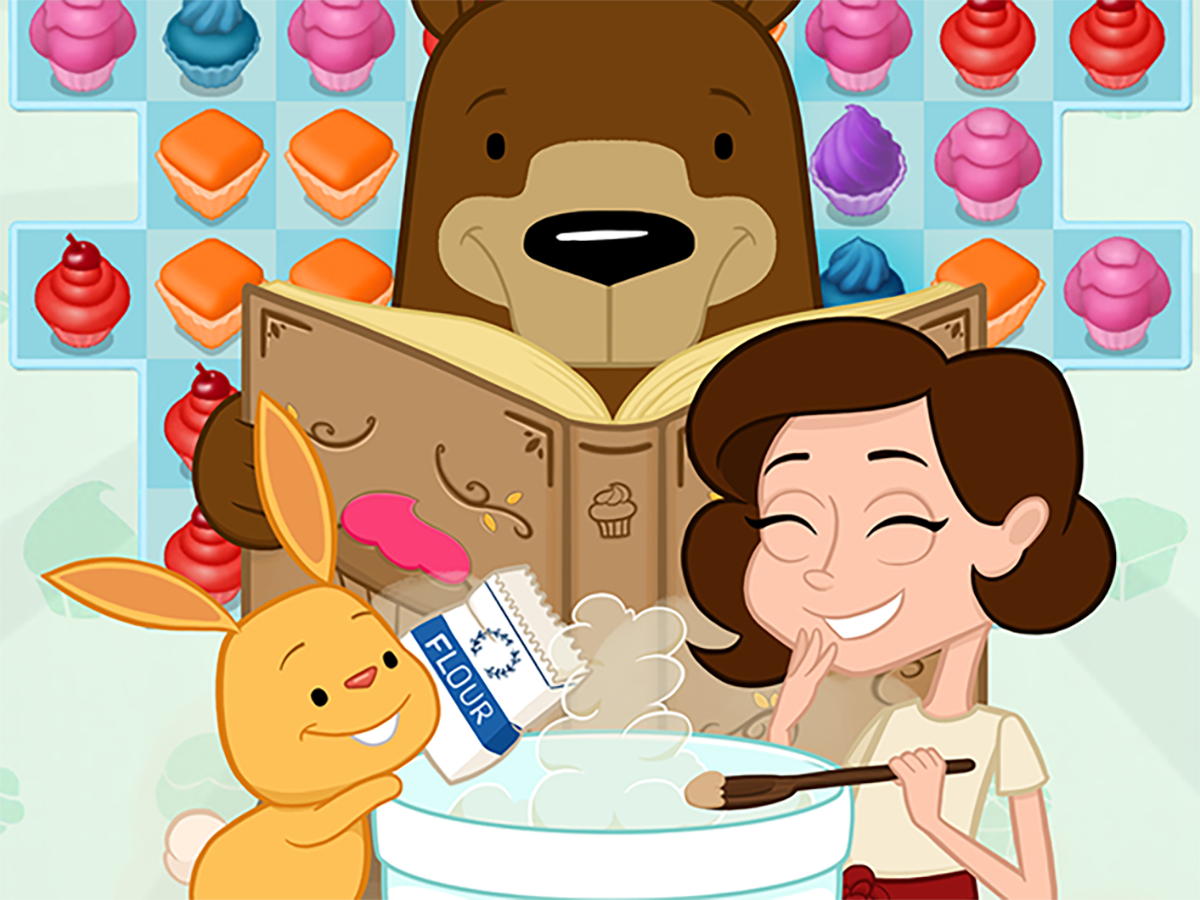
DC: Bake Escape is a "match" game with a unique twist – how did you guys come up with that mechanism?
IB: We do a lot of rapid iteration, so it's a real fail fast approach. At the time we were developing Bake Escape, Candy Crush was massive. There were plenty of other matching games out there, but they all used the same switch mechanic. So we just focused on how we could innovate on that basic input and do something a bit different.
It came with its challenges for sure. We tried a few things out and built several prototypes. Some didn’t work but the sliding one did.
I think that's the thing when we're doing these rapid, low-cost experiments. We'll try several things, and there’ll be one that makes you go “That’s cool!” and you know there is something in it. You need to have several fails before you get to that stage.
So, that's how we got there. Taking a simple mechanic, trying a few things out, and seeing what worked.
"It was great hearing people go 'Oh, I get it…' straight away. You could hear the emotion in their voice, and you knew they understood. That's when we knew we were in the ballpark and we’d got it right."
DC: Yeah, that mechanic was the first thing I noticed when I downloaded the game. It's different.
IB: It was why I wanted to put the game into PlaytestCloud. That input is very different on a micro-level for somebody who plays games like Candy Crush. To move a whole row of tiles is actually really jarring, and when I was watching people play the prototype, you could see that they were so used to going one tile at a time and didn’t make full use of sliding a whole row.
It was really strange when we did the first round of PlaytestCloud videos because you'd see people trying, but they couldn't make matches. Well, not until they fully understood the core mechanic. They were just clicking across one tile at a time because that's what had been so ingrained. Then, all of a sudden, you'd spot that penny-drop moment where players would be like, “Oh, now I get it!” and then they'd be off enjoying the game. That’s when I knew we needed to go back and focus on those first few moments. You're talking microseconds. Making sure players understand the game from the first input is super important. That's where PlaytestCloud came in, and it was invaluable in my opinion.
Getting insight into what players were doing in the first moments of the game was the greatest benefit of using you guys – there was other stuff for sure, but getting insight into those first thirty-seconds was critical.
After a few rounds, it was great hearing people saying “I get it…” straight away. You could hear the emotion in their voice, and you could tell they understood. That's when we knew we were in ballpark and we’d got it right.
It took several rounds, and we certainly didn’t solve it the first time. But we kept learning and trying different things out. Each time we put new solutions back into playtesting, and it was just a case of going through that process, iterating and learning. Without having the insights that we got from those videos, I don't know if we'd have nailed it so quickly.
DC: What considerations does your team make when deciding which platforms to develop for? i.e., Android, iOS, PlayStation.
IB: We largely develop free-to-play mobile games. That's our business model at the moment.
We look at where the audience is for what we're building, so with Bake Escape, we obviously wouldn't build it for the PlayStation 4, because the audience doesn't exist.
Android or iOS? – I wouldn't say we put one over the other. We just develop for mobile. It's largely skewed by the product we’re developing and where the audience need is.
"The great thing about PlaytestCloud is that I can tell the team, ‘Go watch that video at that exact moment and you'll see the problem. You can pinpoint issues and show multiple examples.'"
DC: How do you integrate playtesting into the game development process? You don't have to focus on Bake Escape here because I know that you playtest a lot of games with us.
IB: Every designer has a responsibility to test their work.
Early in my career, I worked on something for about six months or so, and I was quite confident in it. I thought, "Yeah, it's going to be great." Went into a playtesting session and nobody got it. It was like being punched in the stomach. It was a hard but valuable lesson to learn. It made me a very humble designer, and I knew from then on I had a responsibility to integrate testing throughout my design process and validate my work.
I was fortunate that I learned this early in my career, and since then it's made me an advocate of testing in everything I do. Be brave and show your work. Show as much as you can. Don’t worry if it’s a bit rough around the edges, it’s more costly to learn about a problem after months of development than it is early in development. Also, the long-term impact of NOT testing can be catastrophic.
Once you’ve validated your work, you’ll be confident in what you're doing, and so will the people around you.
Use data analytics for sure, but remember people are people at the end of the day. You have to understand there is a human being at the end of what you're making. You can really tell that with your [PlaytestCloud] videos... You can see where people are struggling. You can hear when somebody's having a great time and they really get it. You can’t measure that with analytics.
So, how do we integrate playtesting into the process? Frequent and often. Constantly do it throughout your development cycle. Constantly get feedback and provide insights back to your team. It's invaluable.
"I know I could ask any member of the team and they would say the exact same thing. We wanna do more testing videos, we wanna know more. They are great, it's been really, really useful."
DC: When did you first learn about PlaytestCloud? and was your first thought, "Great, there's a service that does this?"
IB: Before PlaytestCloud, it was mainly just in-house testing. At Codemasters, we had an in-house testing facility, which was awesome. Exient's a smaller company, so we do a little bit of in-house testing, but we haven't got a testing lab, like Codemasters – so it was a bit more tricky. The Leamington studio was completely open-plan, so we didn't even have a closed-off meeting room.
PlaytestCloud seemed like a real sensible option, and it's really cost-effective as well. From the small amount that we invest in playtesting videos; the value we extract is huge. We can apply it to what we're doing and make a better product because of it.
How did we find out about PlaytestCloud? Our studio director went to Casual Connect in Amsterdam where he met Christian [PlaytestCloud Co-Founder]. When he came back, he told me about PlaytestCloud, and I was like, "This sounds amazing! Let's get on it!” I was pretty much straight on Skype to Christian as it was exactly the kind of service we’d been looking for. Since then I think you guys [PlaytestCloud] have gone from strength to strength.
I championed PlaytestCloud to colleagues at other studios, and I know that a lot of people use you guys now. I think my enthusiasm may have led to some extra business for you, which is awesome – I'm really glad. You guys offer an amazing service, and I'm always amazed at the quality and speed of what we get back. I’ll send something off to be tested, and the next morning I'll come in and have videos waiting to be reviewed.
DC: I think you've already answered this question, but still, when is the best time to start playtesting?
IB: Early and often.
"Without that insight we'd probably have released the game not knowing there was a problem, would have gotten low review scores, wouldn't have made as much revenue, and it could have really impacted on the product's performance. So, there for me is proof that there is massive value in doing PlaytestCloud videos."
DC: Who runs the playtests and how do they evaluate them?
Traditionally it's been me that organizes the playtests – certainly with PlaytestCloud – and the internal testing that we do normally goes through me as well. I also get the tricky job of relaying information back to the team.
What I find very difficult is when I have to communicate negative news. So, if something doesn't work, for example; how I communicate that back can be a real challenge. This is especially hard if it's going back to a big team who are in the throes of production, trying to get a game built. The stress levels are high as they are trying to get the game finished, and I'm coming in with a piece of paper that says, "Guys, you might wanna change this."
It's difficult. The team wants to then see all the data points, and they want to be clear about what exactly is happening. The great thing about PlaytestCloud is that I can tell the team, ‘Go watch that video at that exact moment and you'll see the problem. You can pinpoint issues and show multiple examples.’
Here in Malta, we've got three games in production at the moment – all at various stages of development. We did some PlaytestCloud videos for all three products recently. Some of the designers hadn’t had the chance to do any testing before. How they responded to the feedback was awesome.
One of those games was Top Gear: Donut Dash, where we were in the same situation as Bake Escape. We could see in the first few moment of the game that people were really struggling. But then, eventually you'd see it click, and they’d get it.
That then led to a complete overhaul of the first-time user experience (FTUE), and players understand what to do a lot more clearly now. Without that insight we'd probably have released the game not knowing there was a problem, would have gotten low review scores, wouldn't have made as much revenue, and it could have really impacted on the product's performance. So, there for me is proof that there is massive value in doing PlaytestCloud videos.
I know I could ask any member of the team and they would say the exact same thing. We wanna do more testing videos, we wanna know more. They are great, it's been really, really useful.
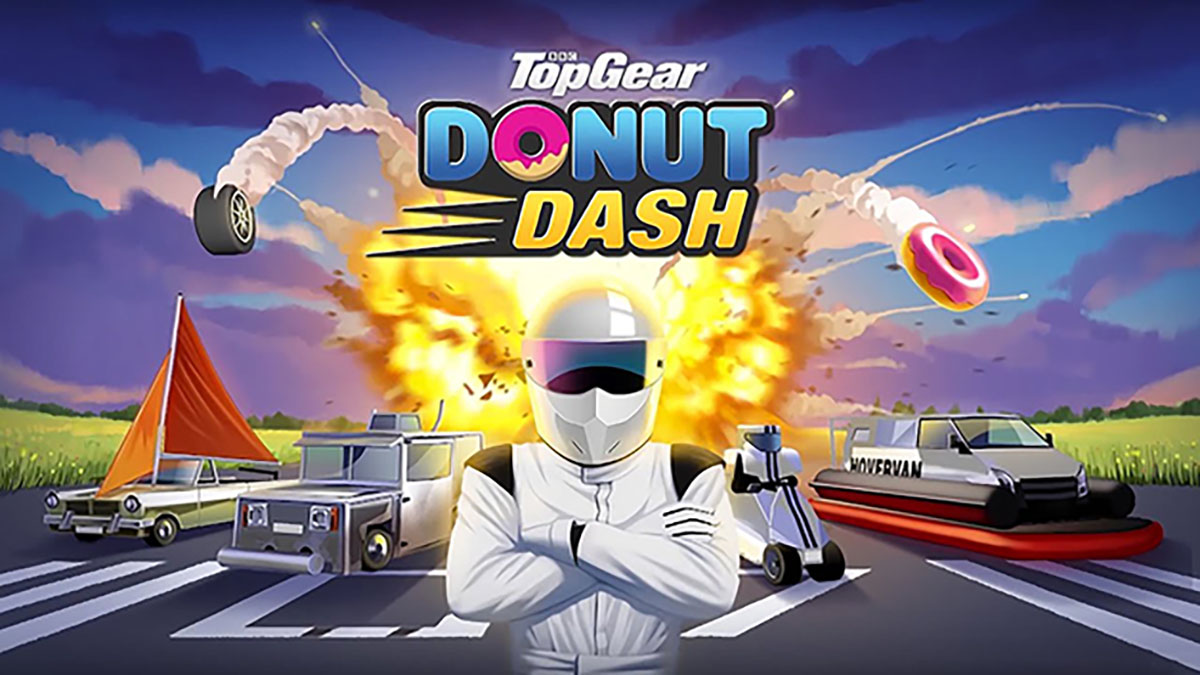
DC: When setting up the playtests, how important are the demographics of the players? Including things like; what games they're interested in? and so forth.
That's a tough question. We do a lot of work on personas and scenarios, so we have a clear understanding of who we're developing these games for.
When we do the tests, we want to get the demographic as close to who we're developing for as possible. That said, it's always good to get a slightly different view on things. For example, with Dancing with the Stars; we've done PlaytestCloud videos for males and females. It's largely a female audience, but we know for sure that guys play it, and guys really enjoy it.
The primary demographic is female, but we still care about the secondary demographic as well, which might be someone completely different. It's good to get viewpoints from lots of different areas. This is where PlaytestCloud is great because you can pick a wide range of testers.
"You can never learn everything. Just keep doing more testing."
DC: I think you've already answered this a little bit, but do you have an example of a learning taken from playtesting that led to a significant change during the development of Bake Escape or any of the subsequent updates?
IB: I'd say the first-time user experience. It was really insightful, and those videos really helped the team as we all knew that the mechanic was a little bit different.
Doing those several rounds of PlaytestCloud videos really helped us building a solid FTUE. We really noticed the impact and it really, really helped.
DC: What about later testing? You tested Bake Escape more after release.
IB: We did one round of testing where we submitted three or four different builds to see which one performed best.
I think that's the great thing about PlaytestCloud, you can try different things out. Being able to submit several different builds all at once, watch the videos and see which one works best. That helps inform the next iteration you're going to build. It’s all good information
that's coming back.
"Don't be afraid of testing something early. You'll learn a lot, and that's invaluable. The information that you get back for the price that you pay is great. It's really high-value content you get back."
DC: You've said, "Early and often," is the right time to begin playtesting, but what's the point that you can no longer learn any more from playtesting?
IB: I don't think you’ll ever learn everything you can learn from playtesting. You're always going to be learning something new.
Unless you've got a flawless FTUE funnel and your KPIs are performing 100%, there are always things you can improve, and that's where PlaytestCloud and playtesting can be really, really useful.
Even if it's something small, if you can fix an issue with your product as a result of testing, and you see an uplift in your KPIs, that's really powerful. On a business level, you’ve proven the value user testing has on the bottom line.
You can never learn everything. Just keep doing more testing.
DC: Is there Bake Escape sequel in the works?
IB: I know that there's a lot of love in the company around the characters and the universe that we created for Bake Escape… So never say never.
I would love to do something with it, we'll see.
"We correlated our analytics with PlaytestCloud videos, so we could closely observe how players were behaving at specific moments. That's where data analytics and user testing really mirror-up nicely. Both work together to form a 360-degree view of the issue you’re trying to solve."

DC: Final question – What tips would you give people just starting out with playtesting their games?
IB: Don't be afraid of testing something early. You'll learn a lot, and that's invaluable. The information that you get back for the price that you pay is great. It's really high-value content you get back.
Try and understand what it is you're trying to test. You'll probably get some information back that you weren't anticipating, "Oh, somebody's not clicking on that button. Why aren't they clicking on that button!?” You'll get those. You'll see that naturally. But if you’re trying to spot something specifically, it's good to have that in mind.
With Angry Birds Transformers, We looked at our FTUE funnel, and we timed where the drop off points were in the funnel. We correlated our analytics with PlaytestCloud videos, so we could closely observe how players were behaving at specific moments. That's where data analytics and user testing really mirror-up nicely. Both work together to form a 360-degree view of the issue you’re trying to solve.


